
Exposé Online
What's old
Exposé print issues (1993-2011)
- 1 (October 1993)
- 2 (February 1994)
- 3 (May 1994)
- 4 (August 1994)
- 5 (October 1994)
- 6 (March 1995)
- 7 (July 1995)
- 8 (November 1995)
- 9 (March 1996)
- 10 (August 1996)
- 11 (February 1997)
- 12 (May 1997)
- 13 (October 1997)
- 14 (February 1998)
- 15 (July 1998)
- 16 (January 1999)
- 17 (April 1999)
- 18 (November 1999)
- 19 (May 2000)
- 20 (October 2000)
- 21 (March 2001)
- 22 (July 2001)
- 23 (December 2001)
- 24 (April 2002)
- 25 (September 2002)
- 26 (February 2003)
- 27 (August 2003)
- 28 (December 2003)
- 29 (April 2004)
- 30 (September 2004)
- 31 (March 2005)
- 32 (September 2005)
- 33 (May 2006)
- 34 (March 2007)
- 35 (January 2008)
- 36 (October 2008)
- 37 (July 2009)
- 38 (July 2010)
- 39 (Summer 2011)
Features
Kunst macht frei —
A Profile of Area

1973 was a fertile time for music and musicians. As in any period of time, there were many minds questioning the so-called conventions of music and the music industry. The time was ripe for experimentation and the combining of disparate sound and styles in ways never before imagined. However, in the early 70s in Italy, artists did not automatically consign themselves to obscurity by doing so. Area was born of a strong political commitment, largely due to the polarized, fragmented political climate in Italy. Their political message was not hidden in comfortable and familiar pop-song structures; instead they challenged the listener with music as unsettling and difficult as their radical social ideas.
by Mike Borella, Published 1995-07-01
Though excerpts of Area albums (and in some cases, entire albums) could be labeled as harsh and dissonant, the music was never mechanical nor was it cold. The warmth and charm that many of the Italian groups of that time period displayed was prevalent in Area's six studio albums, two live albums and their pair of compilations.
1. Genesis
Formed in 1972, the original lineup consisted of Demetrio Stratos (vocals and organ), Patrizio Fariselli (keyboards and piano), Paolo Tofani (guitars), Victor Busnello (sax), Yan Patrick Djivas (bass) and Guilio Capiozzo (drums and percussion). Subtitled International POPular group (notice the emphasis on pop!), what one hears on their recordings goes far beyond the mass-market mercantilism that popular music was and is. Although they combined elements of jazz, rock, avant-garde, Middle-Eastern folk musics and modern classical, Area is mostly known as an experimental jazz-rock outfit. Perhaps this label is most fitting (if we must label the band), as the contributions of Busnello, Fariselli and Capiozzo are distinctively jazz-influenced, and the compositions were often improvisational.
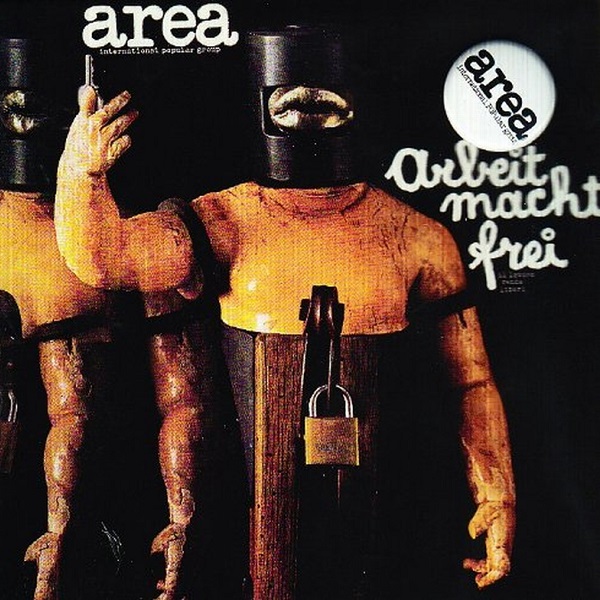 Arbiet Macht Frei, their debut, was released in 1973. The title is in German and means"Work will make you free," which had been written in Nazi concentration camps. The opening track, "Luglio, Agosto, Settembre" is representative of what Area was to become. It begins with spoken Arabic, which segues into singing (more like vocal-chord stretching) by Stratos. The song structure soon kicks in with a spiraling riff, the style of which is soon to become a trademark of the band. After a few bars it may seem that the typical verse-verse-chorus construct is going to be used, but instead there is no chorus. Where one would expect a solo, a chaotic mass of sound from sax, keyboards and guitar slowly builds into free-jazz, with Stratos' yodels and howls intertwined between the instruments. Then the riff begins again, and we have a reprise.
Arbiet Macht Frei, their debut, was released in 1973. The title is in German and means"Work will make you free," which had been written in Nazi concentration camps. The opening track, "Luglio, Agosto, Settembre" is representative of what Area was to become. It begins with spoken Arabic, which segues into singing (more like vocal-chord stretching) by Stratos. The song structure soon kicks in with a spiraling riff, the style of which is soon to become a trademark of the band. After a few bars it may seem that the typical verse-verse-chorus construct is going to be used, but instead there is no chorus. Where one would expect a solo, a chaotic mass of sound from sax, keyboards and guitar slowly builds into free-jazz, with Stratos' yodels and howls intertwined between the instruments. Then the riff begins again, and we have a reprise.
While there is no doubt that Area had a penchant for doing the unexpected, their most surprising element has to be the vocals of the Egyptian-born Greek, Demetrio Stratos. He elevated rock singing to new heights with his vocal gymnastics. With a range reputedly close to 7000 Hz (the theoretical limit of the human voice), he could not only hold notes for long periods of time, but he would modulate them vibrato-like, or leap and dive from low to high and back again, with pinpoint accuracy. His voice sounded out the lyrics as much as sung them, as it dropped to conspiratorial whispers, then sprung to shouts and laughs. And yes, he could sing. Without Stratos, Area still would have been a formidable outfit. Not many bands have ever been as much of a total package. Every member pulled their weight; even the rhythm section didn't fall back on repetitive clichés. While prodigiously talented, it was Stratos’ sense of experimentation (as later was evident on his solo and collaborative works), his desire to go beyond the established norms of jazz and rock, that pushed Area over the edge into legendary status, and garnered them praise from luminaries such as John Cage.
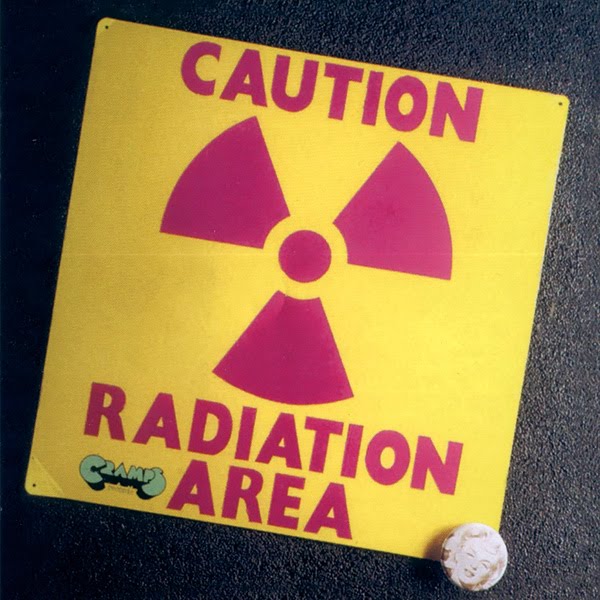 Between Arbeit Macht Frei and the second Area album, Caution Radiation Area, Djivas abdicated the bass chores, and joined PFM in time to record L'Isola di Niente with them. His replacement was Ares Tavolazzi, who was proficient on both electric and acoustic bass, as well as trombone. Busnello left the band, but was not to be replaced until Steve Lacy joined the band in 1976.
Between Arbeit Macht Frei and the second Area album, Caution Radiation Area, Djivas abdicated the bass chores, and joined PFM in time to record L'Isola di Niente with them. His replacement was Ares Tavolazzi, who was proficient on both electric and acoustic bass, as well as trombone. Busnello left the band, but was not to be replaced until Steve Lacy joined the band in 1976.
Twenty years later, Caution Radiation Area seems an experiment in structure. None of the pieces have a familiar style. One wouldn't think that blistering jazz-rock would combine so smoothly with electronic soundscapes and noodling, but it can when in the right hands. The most immediate track is "Cometa Rossa," which features Stratos chanting in Greek, in a style that sounds like it is right out of Arabian Nights, sandwiched between spiraling riffs. Also remarkable is the appropriately-titled closing track, "Lobotomia," which is a sonic assault in the style one might expect from Ligeti or Xenakis. Free compositions, floating ominously in storm-struck sea of sounds and textures, while demented voices call and cajole you... upon digesting Caution Radiation Area, one must question why music (which essentially is a group of sounds) needs structure or form. Perhaps that is what Area wanted.
 1975 finds the now-established core members of Area (Stratos, Fariselli, Capiozzo, Tofani and Tavolazzi) return to the song structure (sort of). The compositions on their third offering, Crac!, are (for the most part) listenable, contagious and delightful. But they are also complex, weird, and (yes, I'll use the word again) experimental. Somehow, they manage to push the envelope of creativity and musical vitality, with melodies you can (try to) sing along with. More than ever before, the sheer musicality of this band is evident. Showcased are Fariselli and Tavolazzi. Whether they are trading licks on "La Mela di Odessa," backing Stratos in "L'Elefante Bianco," or jamming together on “Megalopoli," their precision and creativity shines. A particularly remarkable performance by Fariselli is the piano solo on "Nervi Scoperti." Rounding out this offering is the crash-and-bang piece, "Area 5," composed by fellow avant-gardists Juan Hidalgo and Walter Marchetti, which may sound more at home an a Henry Cow record! However, Crac! remains the most accessible album from the early version of Area, and is often recommended to listeners who are wondering which Area release to open their ears to first.
1975 finds the now-established core members of Area (Stratos, Fariselli, Capiozzo, Tofani and Tavolazzi) return to the song structure (sort of). The compositions on their third offering, Crac!, are (for the most part) listenable, contagious and delightful. But they are also complex, weird, and (yes, I'll use the word again) experimental. Somehow, they manage to push the envelope of creativity and musical vitality, with melodies you can (try to) sing along with. More than ever before, the sheer musicality of this band is evident. Showcased are Fariselli and Tavolazzi. Whether they are trading licks on "La Mela di Odessa," backing Stratos in "L'Elefante Bianco," or jamming together on “Megalopoli," their precision and creativity shines. A particularly remarkable performance by Fariselli is the piano solo on "Nervi Scoperti." Rounding out this offering is the crash-and-bang piece, "Area 5," composed by fellow avant-gardists Juan Hidalgo and Walter Marchetti, which may sound more at home an a Henry Cow record! However, Crac! remains the most accessible album from the early version of Area, and is often recommended to listeners who are wondering which Area release to open their ears to first.
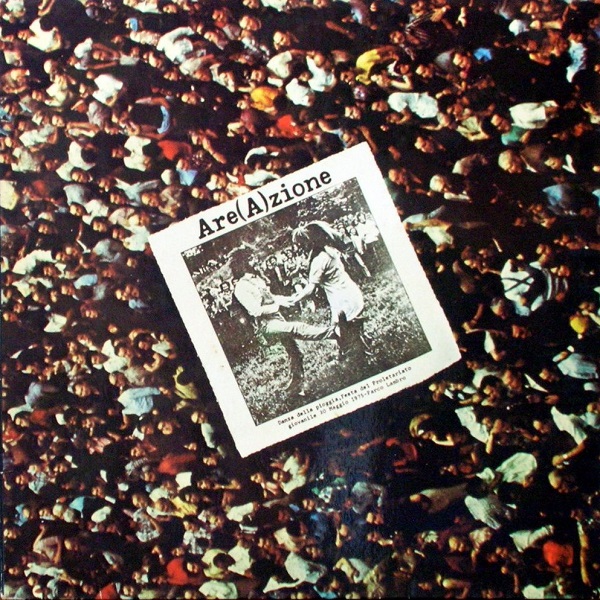 Late 1975 brought us the release on the first live album, Are(A)zione. As the reader might now expect, rather than just reproduce their studio recordings, Area chose to treat their live audiences with extended versions, lengthy improvisations and non-album pieces. Nearly half of "Are(A)zione" does not appear on a studio album, including the 14 minute title track, as well as "LIinternazionale," Area's take on the International Hymn of the Communist Party. In a sense, Are(A)zione was the capstone of the early history of Area, summarizing the musical and political statements of their first three releases. The lineup was mostly static for these years, and the band developed a trademark style, as well as a penchant for the unexpected. Over the next few years, we will see the band move in several different directions with some very surprising results.
Late 1975 brought us the release on the first live album, Are(A)zione. As the reader might now expect, rather than just reproduce their studio recordings, Area chose to treat their live audiences with extended versions, lengthy improvisations and non-album pieces. Nearly half of "Are(A)zione" does not appear on a studio album, including the 14 minute title track, as well as "LIinternazionale," Area's take on the International Hymn of the Communist Party. In a sense, Are(A)zione was the capstone of the early history of Area, summarizing the musical and political statements of their first three releases. The lineup was mostly static for these years, and the band developed a trademark style, as well as a penchant for the unexpected. Over the next few years, we will see the band move in several different directions with some very surprising results.
2. New Directions, New Faces
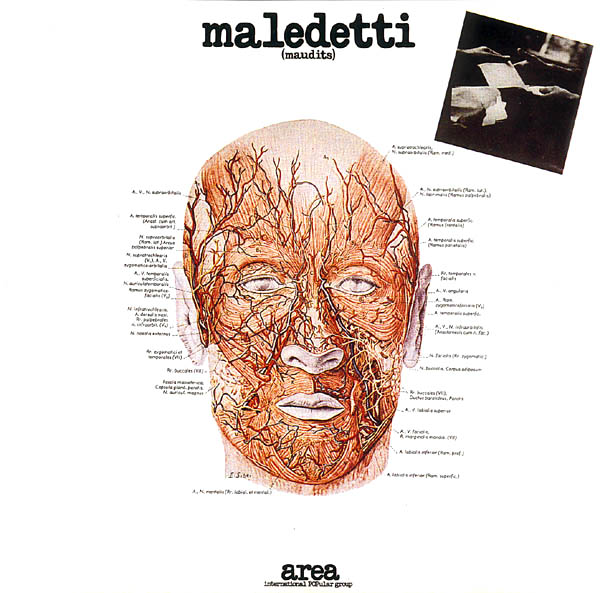 1976 was a year of flux and change. For the recording of the fifth Area album, the core membership of Stratos, Fariselli, Tofani and Tavolazzi were present, but drummer Capiozzo only appears on about half of the album, replaced on various tracks by either Walter Calloni or Paul Litton. Famed jazz saxophonist Steve Lacy augments the band, as do several other studio musicians (including a string quartet). Perhaps it was the contributions of this eclectic group of guests that gives Maledetti its bi-directional feel. On one hand, the opening tracks show Area softening their jazz-rock style to a more comfortable fusion orientation, but then "Scum" features the Fariselli playing an angular piano style that would seem at home on Crac! From the string quartet of "Il Massacro di Brandeburgo Numero Tre in Sol Maggiore" to the inspired sonic, vocal and free-jazz experiments of "Caos (Parte Seconda)," Maledetti defies all attempts at pigeonholing. In particular, the latter track foreshadows what was to come on Event '76. Unfortunately, the original CD release of Maledetti suffered from a poor pressing, as the latter half sounds muffled. The 1994 repressing of Maledetti has this problem fixed, and it features an extra track (an interview) as well.
1976 was a year of flux and change. For the recording of the fifth Area album, the core membership of Stratos, Fariselli, Tofani and Tavolazzi were present, but drummer Capiozzo only appears on about half of the album, replaced on various tracks by either Walter Calloni or Paul Litton. Famed jazz saxophonist Steve Lacy augments the band, as do several other studio musicians (including a string quartet). Perhaps it was the contributions of this eclectic group of guests that gives Maledetti its bi-directional feel. On one hand, the opening tracks show Area softening their jazz-rock style to a more comfortable fusion orientation, but then "Scum" features the Fariselli playing an angular piano style that would seem at home on Crac! From the string quartet of "Il Massacro di Brandeburgo Numero Tre in Sol Maggiore" to the inspired sonic, vocal and free-jazz experiments of "Caos (Parte Seconda)," Maledetti defies all attempts at pigeonholing. In particular, the latter track foreshadows what was to come on Event '76. Unfortunately, the original CD release of Maledetti suffered from a poor pressing, as the latter half sounds muffled. The 1994 repressing of Maledetti has this problem fixed, and it features an extra track (an interview) as well.
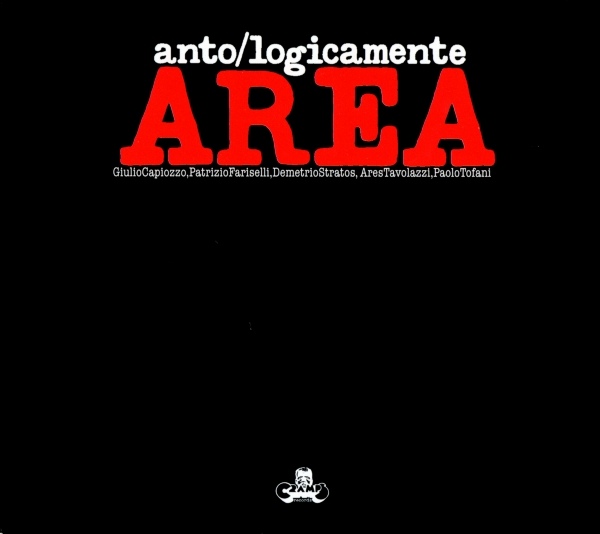 Next was the release of the first compilation album, Anto/Logicamente (which features the otherwise unavailable track "Citazione da George L. Jackson"), as well as the recording of a second live album, Event '76 (although it was not to be released until 1979). The lineup was Fariselli, Lacy, Litton, Stratos and Tofani. These five gentlemen engaged in a total free-form improvisation, which was broken up over three tracks. Critics (including many Area fans) have put down Event '76 as unlistenable noise. The emphasis seems to be on producing new sounds with old instruments; thus, rather than any coherent structure, this album keeps the ears busy with squeaks, drones, trills, farts, clangs, bangs, and even an occasional melody. As one might expect, Stratos is at home in this environment, as he stretches his voice more than ever. While I wouldn't use this release to introduce someone to Area (unless that individual has a background in free-jazz or avant-rock), I still have to list Event '76 among my favorites. The exploratory nature of the sounds and the rejection of conventional style and form make this an important and ground breaking recording.
Next was the release of the first compilation album, Anto/Logicamente (which features the otherwise unavailable track "Citazione da George L. Jackson"), as well as the recording of a second live album, Event '76 (although it was not to be released until 1979). The lineup was Fariselli, Lacy, Litton, Stratos and Tofani. These five gentlemen engaged in a total free-form improvisation, which was broken up over three tracks. Critics (including many Area fans) have put down Event '76 as unlistenable noise. The emphasis seems to be on producing new sounds with old instruments; thus, rather than any coherent structure, this album keeps the ears busy with squeaks, drones, trills, farts, clangs, bangs, and even an occasional melody. As one might expect, Stratos is at home in this environment, as he stretches his voice more than ever. While I wouldn't use this release to introduce someone to Area (unless that individual has a background in free-jazz or avant-rock), I still have to list Event '76 among my favorites. The exploratory nature of the sounds and the rejection of conventional style and form make this an important and ground breaking recording.
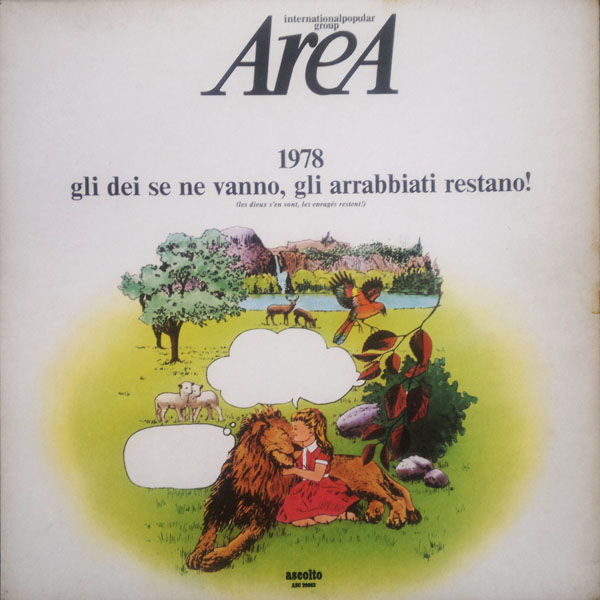 After a brief hiatus in which spin-off projects and solo albums were recorded, Area was reincarnated in 1978 to record and release an album named after the year (full title: 1978: Gli dei se ne Vanno, gli Arrabbiati Restano!). A four-piece this time around (Stratos, Fariselli, Tavolazzi, Capiozzo), the opening tracks recall the first generation of Area, with spiraling melodies and a Middle-Eastern influence. As the album progresses, the band moves toward new territory, including more quirky jazz-rock (with a feel similar to that on Maledetti). Naturally, bass and keyboards take a leading role on this album, as it lacks a full-time guitarist (surprisingly however, Capiozzo's contribution to the fullness of the Area sound is minimal on certain tracks). Towards the end of the album are a few surprises (as might be expected), including a demented doo-wop theme.
After a brief hiatus in which spin-off projects and solo albums were recorded, Area was reincarnated in 1978 to record and release an album named after the year (full title: 1978: Gli dei se ne Vanno, gli Arrabbiati Restano!). A four-piece this time around (Stratos, Fariselli, Tavolazzi, Capiozzo), the opening tracks recall the first generation of Area, with spiraling melodies and a Middle-Eastern influence. As the album progresses, the band moves toward new territory, including more quirky jazz-rock (with a feel similar to that on Maledetti). Naturally, bass and keyboards take a leading role on this album, as it lacks a full-time guitarist (surprisingly however, Capiozzo's contribution to the fullness of the Area sound is minimal on certain tracks). Towards the end of the album are a few surprises (as might be expected), including a demented doo-wop theme.
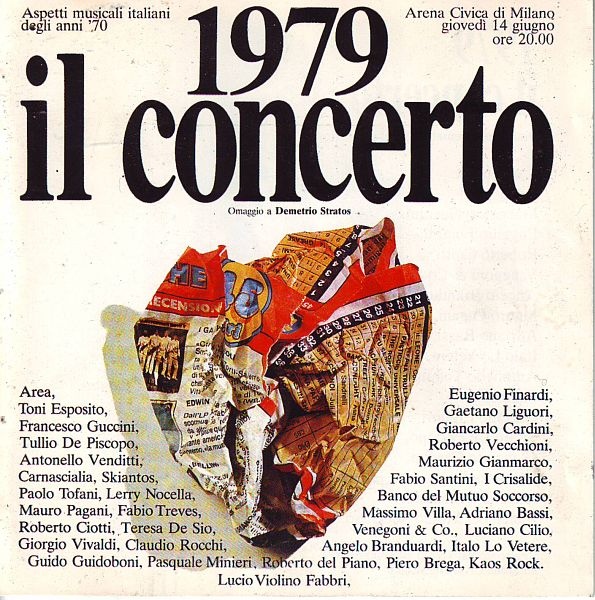 In a sense, 1978 was the last true Area album – who knows where they might have gone had Stratos’ battle with leukemia not taken a turn for the worse? In early to mid 1979, Stratos left Italy for cancer treatment in New York City. His friends and admirers organized a benefit concert on his behalf to be held in Milan on June 14th of that year. The proceeds were to help defer the costs of his medical bills. Stratos died in New York on June 13th, so what was to have been a benefit became a tribute, with over 60,000 people attending (some report the number closer to 100,000). Music was provided by Banco de Mutuo Soccorso, Venegoni and Co. (featuring the former guitarist of Arti+Mestieri) and the remaining members of Area, as well as many other Italian rock bands. Readings were given by poets. The tribute is immortalized on 1979 - Il Concerto Omaggio a Demetrio Stratos, a double length album and CD. While the music is not experimental nor is it challenging, the performances by Area, Banco, and others make it more than just another tribute album.
In a sense, 1978 was the last true Area album – who knows where they might have gone had Stratos’ battle with leukemia not taken a turn for the worse? In early to mid 1979, Stratos left Italy for cancer treatment in New York City. His friends and admirers organized a benefit concert on his behalf to be held in Milan on June 14th of that year. The proceeds were to help defer the costs of his medical bills. Stratos died in New York on June 13th, so what was to have been a benefit became a tribute, with over 60,000 people attending (some report the number closer to 100,000). Music was provided by Banco de Mutuo Soccorso, Venegoni and Co. (featuring the former guitarist of Arti+Mestieri) and the remaining members of Area, as well as many other Italian rock bands. Readings were given by poets. The tribute is immortalized on 1979 - Il Concerto Omaggio a Demetrio Stratos, a double length album and CD. While the music is not experimental nor is it challenging, the performances by Area, Banco, and others make it more than just another tribute album.
3. Post-Stratos Area
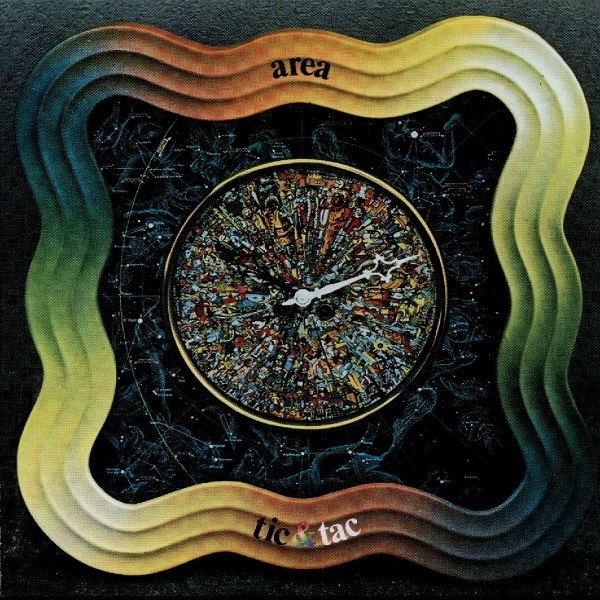 Area didn't fold immediately after Stratos’ untimely death. In 1980, the quartet of Fariselli, Capiozzo, Tavolazzi, and saxophonist Larry Nocella recorded Tic & Tac. This album has always been criticized as a bastardization of Area, and not representative of the band at all. To a certain degree the critics are correct. Rather than breaking down boundaries and pioneering new forms of sound, this Area produced mellow jazz fusion. The sound and feel is quite typical when compared to the fusion standards of the late 70s. Although they chose the role of followers rather than leaders, the prodigious talent of the musicians shines through. While formulaic and perhaps a bit too plain when compared the excellence of their earlier offerings, Tic & Tac, when taken out of the Area context, is one of the more interesting light-fusion releases of that time period.
Area didn't fold immediately after Stratos’ untimely death. In 1980, the quartet of Fariselli, Capiozzo, Tavolazzi, and saxophonist Larry Nocella recorded Tic & Tac. This album has always been criticized as a bastardization of Area, and not representative of the band at all. To a certain degree the critics are correct. Rather than breaking down boundaries and pioneering new forms of sound, this Area produced mellow jazz fusion. The sound and feel is quite typical when compared to the fusion standards of the late 70s. Although they chose the role of followers rather than leaders, the prodigious talent of the musicians shines through. While formulaic and perhaps a bit too plain when compared the excellence of their earlier offerings, Tic & Tac, when taken out of the Area context, is one of the more interesting light-fusion releases of that time period.
In this time frame, a second compilation, Area '70 was released. As far as I know, the only otherwise unavailable piece of music on this album is the studio version of "L'Internazionale." As of the time of this writing, this compilation has not been reissued on CD.
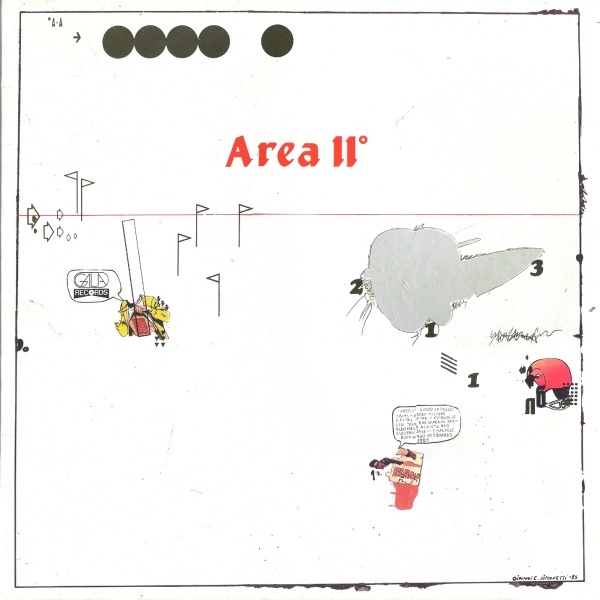 After Tic & Tac, Area did disband. I am not sure of exactly when, as there are reports of Area playing live in 1981 (performing a modern rendition of Aristofane's "Byrds"). Fariselli wrote music for soundtracks and theater, while Capiozzo toured with jazz bands and did guest work on studio albums. In the mid to late 80s, there was a band called "Area 2," which I believe to be comprised of some former Area members (my guess would be Fariselli, Tavolazzi and Capiozzo, or some subset thereof). They released an eponymous debut in 1986 and a follow-up, City Sound, in 1987. Both were put out on the Italian Gila label, and as far as I can tell, are out of print and difficult to find. I have not heard these albums.
After Tic & Tac, Area did disband. I am not sure of exactly when, as there are reports of Area playing live in 1981 (performing a modern rendition of Aristofane's "Byrds"). Fariselli wrote music for soundtracks and theater, while Capiozzo toured with jazz bands and did guest work on studio albums. In the mid to late 80s, there was a band called "Area 2," which I believe to be comprised of some former Area members (my guess would be Fariselli, Tavolazzi and Capiozzo, or some subset thereof). They released an eponymous debut in 1986 and a follow-up, City Sound, in 1987. Both were put out on the Italian Gila label, and as far as I can tell, are out of print and difficult to find. I have not heard these albums.
In 1994, Fariselli and Capiozzo teamed up with the classically-trained guitarist Pietro Condorelli and bassist Paolo Dalla Porta to form yet another version of Area. This lineup played about 30 small gigs around Italy last year. They are planning to record this year, but as of the time of this writing, I've heard no word of a release.
4. Spin-Offs and Solo Projects
While there have been dozens of collaborative efforts and guest appearances by the former and current members of Area, many of these recordings are very difficult to find. Thanks to Artis, some are finally seeing the light of CD, yet many are only available on out of print LPs. Some of the more significant spin-off and solo albums are discussed below.
4a. Demetrio Stratos
Stratos was born in Egypt in 1945 to parents of Greek descent. As a child he studied piano and accordion at the Conservatoire National d'Athens. In his 17th year, he moved to Italy to study architecture at the Politecnico di Milano. In 1967, he joined the Italian rock group I Ribelli for a short stint as keyboardist. He soon quit the band and focused his time and energy on vocal research (which was to remain a major part of his life). In 1972, he formed Area, but his vocal studies continued and they brought him a small degree of fame. He was invited to lecture at several European universities, he met with prominent music researchers, and of course, gave live voice performances. He recorded a solo vocal version of John Cage's "Mesostics," which he subsequently performed to large audiences. Impressed by his work, Cage invited Stratos to participate in some of Cage's concerts.
Many of Stratos’ groundbreaking vocal techniques can be found on his six solo albums, two collaborations, and various guest appearances. His albums Metrodora and Cantare la Voce are entirely vocal. Stratos pushes his vocal chords more than ever, and while creating sounds that notation does not exist for, he consigns himself to the extreme avant-garde. Needless to say, these albums are very difficult to describe, and even more difficult to listen to. With Stratos performing multi-tracked combinations of hums, screams, moans, howls, clicks, pops, and laughs, these pieces are not necessarily appealing even to the hardcore Area fan. However, for students of voice or linguistics, Stratos pushes the limits of voice far enough to keep one's ears busy.
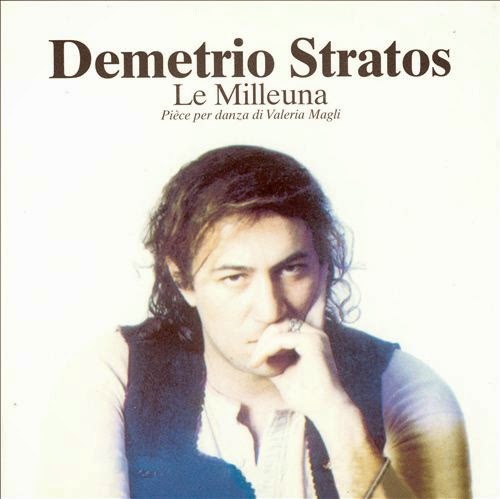 "La Milleuna" is a 60 minute piece recorded for a dance routine by Valeria Magli. It consists of Stratos voicing 100 Italian words starting with the letter S, all of which have a sexual connotation. He repeats the set of words several times, voicing each one differently every time. This piece is not music in the strictest sense. Additionally, the recording is only the audio half of an audio/video performance, so I also feel like I'm missing something when I listen to it. However, fans of Stratos’ techniques are sure to be pleased by his diversity.
"La Milleuna" is a 60 minute piece recorded for a dance routine by Valeria Magli. It consists of Stratos voicing 100 Italian words starting with the letter S, all of which have a sexual connotation. He repeats the set of words several times, voicing each one differently every time. This piece is not music in the strictest sense. Additionally, the recording is only the audio half of an audio/video performance, so I also feel like I'm missing something when I listen to it. However, fans of Stratos’ techniques are sure to be pleased by his diversity.
In the late 70s, Stratos performed a live duet with violinist Lucio Fabbri. This event is captured on their album Recitarcantando. Most notable is their nearly-ten-minute cover of "Cometa Rossa." This is a very raw recording, and both musicians make a few mistakes, but it is more immediately listenable than Stratos’ purely vocal albums. Another live recording from the same time period features Stratos, Area guitarist Paolo Tofani, and PFM violinist Mauro Pagani covering old rock and roll classics. Perhaps the most pedestrian of all of Stratos’ work, Rock and Roll Exhibition is more of a conversation piece than anything else. While it is humorous and enjoyable to listen to this trio's takes on "Blueberry Hill," "Hound Dog," and "Can't Stop Loving You," they add little in terms of the expected Area weirdness to their versions.
Finally, Stratos, as well as Fariselli, Capiozzo, and Tavolazzi, contributed to Mauro Pagani's 1979 self-titled solo album. Two tracks in particular, "Europa Minor" and "L'albero di Canto (Parts I & II)" are extremely Area-esque.
4b. Patrizio Fariselli
Patrizio Fariselli was born in July, 1951. He studied piano at the Conservatory of Pesaro as a teenager. Aside from his work with Area in the 70s, he recorded an experimental piano album entitled Antropofagia in 1977. Sadly, this recording is still difficult to find in North America, despite its recent release on CD.
Since the early-80s breakup of Area, Fariselli has written movie and theater soundtracks, including: Zitti e Mosca, Benvenuti in Casa Gori, and Belle al Bar of Alessando Benvenuti, and the theater works Andy & Norman, Sete, and Piume of Zuzzurro e Gaspare, and Colchide of Quelli di Grock. In 1982 he composed music for the ballet Itineraire Bis for Le Ballets Jazz-Art of Paris. He has also collaborated (mostly in live situations, I think) with the jazz artists Steve Lacy, Paul Lytton, Curtis Fuller, Howard Johnson, and Art Farmer.
4c. Giulio Capiozzo
Born in February 1946, Guilio Capiozzo remains one of the most underrated drummers in both the rock and jazz fields. While he has not recorded a solo album to date, Capiozzo has studied percussion with a wide variety of artists, and collaborated with many of them. They include: Arze-Anaiak Brothers, Kenny Clarke, Ali Mohammed, Elvin Jones, Trilok Gurtu, Roy Haynes, Freddie Waits, and Jimmy Owens, Ellis Marsalis, George Coleman, Harold Land, Art Farmer, Gary Bartz, Steve Turre, George Cables, Charles Tolliver, Gabin Dabire and Rassmin Paad.
4d. Ares Tavolazzi
 Tavolazzi's prodigious bass skills have, to the best of my knowledge, not been extensively recorded since the early 1980's. His one solo album, Kars was released in 1989. It features Tavolazzi on acoustic and electric bass leading a trio lineup through traditional-styled jazz. While not breaking new ground, it is an enjoyable listen for those into mellow, late-night music. The bass and drum tracks are particularly strong. Tavolazzi has also taught bass in small towns around Italy.
Tavolazzi's prodigious bass skills have, to the best of my knowledge, not been extensively recorded since the early 1980's. His one solo album, Kars was released in 1989. It features Tavolazzi on acoustic and electric bass leading a trio lineup through traditional-styled jazz. While not breaking new ground, it is an enjoyable listen for those into mellow, late-night music. The bass and drum tracks are particularly strong. Tavolazzi has also taught bass in small towns around Italy.
5. What next?
While the music of Area is unique, their purely musical appeal has always been coupled with their sense of experimentation and open-mindedness. There are many artists from various musical styles than either influenced Area, were influenced by then, or contain a similar degree of musicality and experimentation. Some of these artists may be interesting to the Area listener. From the jazz camp, the mid-sixties work of Ornette Coleman, Sun Ra and John Coltrane is recommended, as well as their contemporaries, Miles Davis and Charles Mingus. Modern classical has produced greats such as Edgard Varese, Gyorgy Ligeti, Alfred Schnittke, Iannis Xenakis, and John Cage (among many others), all of whom have broken down well-established barriers in music. Avant-rock trailblazers such as the bands from the Henry Cow family tree and the Rock In Opposition (RIO) confederacy will challenge any ready listener, as will a some of Frank Zappa's work. Of late there have been a handul of individuals and bands influenced by Area. Included are the Japanese band Happy Family (covering Cometa Rossa at their live shows) as well as Chihiro S. of Lacrymosa and Golden Avant-Garde, who is great fan of Area. Alberto Piras of the Italian heavy-rock band Deus Ex Machina displays some interesting Stratos-esque vocal pyrotechnics on that band's debut. Finally, there is an Italian band called Tondo, which has performed an Area cover.
6. Acknowledgements
This article was a pleasure for me to write. I have been an Area fan for a relative short time (since the CD release of Crac! became available in the USA a few years ago), but they are easily one of my favorite artists. Their depth and complexity, and their courage to question the norms of music keeps bringing me back to their albums for yet another listen. I'd like to thank the former and current members of Area for providing the world with such wonderful music. Many others have helped in the preparation of this article as well. Special thanks are due to Marino Paire of Musical SNC in Milan, Steve Feigenbaum of Wayside, Alberto Brendolin of Artis/Cramps, Greg Walker of Syn-phonic, Doug Larsen, Ranjit Padmanabhan, Peter Thelen, Lucio Picci, Brian Gould, and Phil Kime. Each of these individuals has provided me with either information regarding the band or a method of obtaining Area-related recordings.
Filed under: Profiles, Issue 7
Related artist(s): Banco del Mutuo Soccorso, Area, Luigi Venegoni
What's new
These are the most recent changes made to artists, releases, and articles.
- Review: Earthbound - Earthbound
Published 2025-12-28 - Review: Olgoj - A Place to Rest
Published 2025-12-27 - Release: John Weider - John Weider
Updated 2025-12-26 19:13:54 - Artist: John Weider
Updated 2025-12-26 19:09:52 - Release: Moonrider - Moonrider
Updated 2025-12-26 18:51:45 - Artist: Moonrider
Updated 2025-12-26 18:49:51 - Release: Octopus Syng - Insanity Is the Song We Sing
Updated 2025-12-26 12:53:35 - Release: Tre Spiritus - Tre Spiritus
Updated 2025-12-26 12:49:13 - Artist: Tre Spiritus
Updated 2025-12-26 12:48:34 - Release: Arpia - Festa Grande
Updated 2025-12-26 12:42:27 - Release: Sigmund Freud - Risveglio
Updated 2025-12-26 12:37:54 - Artist: Sigmund Freud
Updated 2025-12-26 12:37:08 - Release: Davide Cedolin - Ligurian Pastoral, Vol II
Updated 2025-12-26 00:17:38 - Release: Davide Cedolin - Ligurian Pastoral
Updated 2025-12-26 00:15:05 - Artist: Davide Cedolin
Updated 2025-12-26 00:12:01 - Review: Kokkinià - The Last Are Lost from the List
Published 2025-12-26 - Review: Pymlico - Core
Published 2025-12-25 - Release: Various Artists - Soul of the Machine: A Celebration of the Life & Legacy of ARP Founder Alan R Pearlman
Updated 2025-12-24 15:58:08 - Review: Jussi Reijonen - Sayr: Salt / Thirst & Sayr: Kaiho – Live in Helsinki
Published 2025-12-24 - Review: TOC & Jean-Luc Guionnet - Quelques Idées d'un Vert Incolore Dorment Furieusement
Published 2025-12-24
